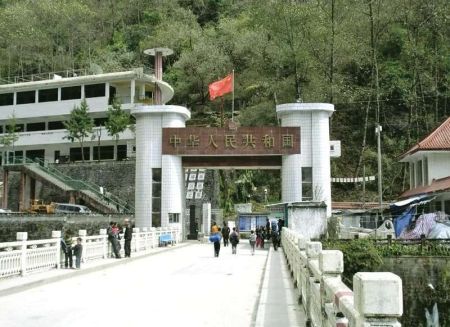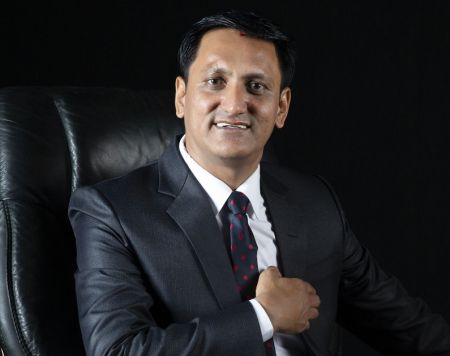--By Vaijayanti Khare
Once upon a firm, not too long ago, in a not too far away place, man’s economic activity turned from pastoral to agricultural to manufacturing. And in that transition, a firm was born, evolved, matured. Now, once again it’s time to question the relevance, the nature, the granular and the textural structure of this ubiquitous basic unit of all business activity.
The Firm, more now than before and increasingly more is under scrutiny. Reason: the continued rise of the empowered customer. From the arrival of privacy-conscious social networks to the rise of the collaborative economy, customers have more choices and more opportunities to be heard than ever. It is clear that creating quality products and delivering exceptional services will not be enough anymore because customers know that their true value goes well beyond their wallets. Every business will need to consider the true value of their customer relationships and provide meaningful value in return. Remember, that here, by customer one means every stakeholder.
Firms are often described as the “visible hand” of globalisation. It has sure come a long way from its humble beginnings as a ‘produce, manufacture, trade and create money’ entity.
The stand-alone corporation, while the most studied organisational form in management education programmes around the world, isn’t nearly as common outside the classroom—even among large businesses. Most market economies’ corporations tend to be part of a larger inter-connected set of companies principally owned and controlled by a family or business group or state. The means of control vary widely—from pyramids of companies with a family positioned at the apex; to cross-holdings of equity shares among the separate operating companies that make up the group; to bank-centeredgroups; to state holding companies owning controlling shares of separate operating companies; to non-state and essentially un-accountable political entities controlling major companies.
A wide range of ownership structures illustrates a number of features of modern economies and investors. First, many different entities find a way to own and control corporations, which is not surprising because business is generally a more reliable path to wealth than other alternatives. Second, the different owner(s) of corporations are creative in finding mechanisms to resolve the always-present dilemma of how to retain control over operating enterprises but at the same time conserve the amount of capital needed to do so. These mechanisms include pyramid structures, cross-holdings, interlocking directorships, and shares with different voting rights. Third, the different types of owners - families, governments, banks, collectives - have widely-divergent objectives so it is not surprising that the rules and institutions in any economy will vary depending on who the dominant owners are.
The Firm is a prevalent form of business activity seen here in Nepal, but how does it stand up to relevance and maturity. A quick international tour of different ownership structures, control mechanisms and operation styles may help illustrate the opportunity that our Nepali firms have to evolve and succeed. Roughly half of Sweden’s 20 largest corporations are family-controlled, and the dominant family, the Wallenberg, use pyramid structures to leverage their own capital to control a range of companies. Through similar arrangements, the Wallenbergs control Ericsson, a global leader in telecom equipment, and Electrolux, one of the world’s largest home appliance companies.
In a pyramid structure, an apex firm holds a controlling interest in two or more holding companies that in turn hold controlling interests in several operating companies in the next tier down. Further tiers can be added to maximise the control leverage of the apex firm - the more tiers, the lower the percentage of capital the owners of the apex firm have to contribute to maintain control of the bottom tier corporations.
Similar pyramids enable the Li Ka-Shing family, Asia’s richest, to control many of Hong Kong’s largest retail, real estate, and port terminal companies through its two holding companies, Hutchison Whampoa and Cheung Kong Holdings. Pyramids are also used in economies as diverse as Canada, France, Israel, Greece, Argentina, Mexico, the Philippines, Spain and through much of Asia.
South Korea’s chaebols are family-based business groups which use both pyramids and reciprocal cross-holdings among group member companies to concentrate control. Samsung, Hyundai, and Daewoo are chaebol family names that have also become global brands. These groups are still largely controlled by their founding families, with family members also occupying key managerial roles. The chaebols’ power peaked in the 1990s but has since been eroded by financial crises which saw 11 of the 30 largest chaebols (including Daewoo) collapse, as many were over-diversified and over-leveraged. Reforms since then prohibit chaebols from owning banks, in part to increase the power of the state over them.
Japan, has a hybrid system with both strong group roots but modern stand-alone influences. Japan’s famous industrial giants like Toyota and Matsushita are essentially widely-held companies with group characteristics including cross-holdings of suppliers and distributors. Japan’s traditional keiretsu - Mitsubishi, Mitsui, Sumitomo - are cross-held groups. And Japan’s mid-size globally-dominant but lesser known component companies - Murata, Shin-etsu, Mabuchi - are often single-business stand-alone companies.
Globalisation, or semi-globalisation, has influenced the very existence of the Firm. And although Nepal has a fair presence in the markets where globalisation is particularly common, the Firm seems to be locked-in in the mid-way position between old and ineffective and the new and efficient.The Firm, here, was not directly made by the First or Second wave of globalization, but now the business ownership has to get un-stuck from the unwieldy, unchanging, irrelevant model of the Firm, its leadership and operations.
It is time to move from the ‘Once upon a Firm’ syndrome and be ready to ride the current wave of business dynamism.
Vaijayanti Khare is known for her dynamic engagements in the corporate, academic, social and development fields in Kathmandu over the past decade. Her writings are a reflection of her hands-on work, insights, studies, success and challenges.






















